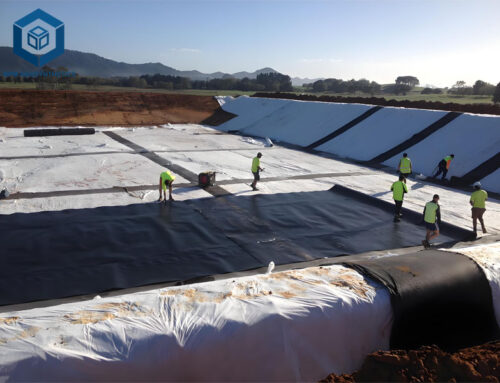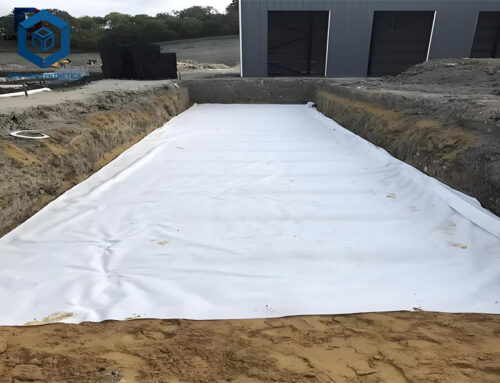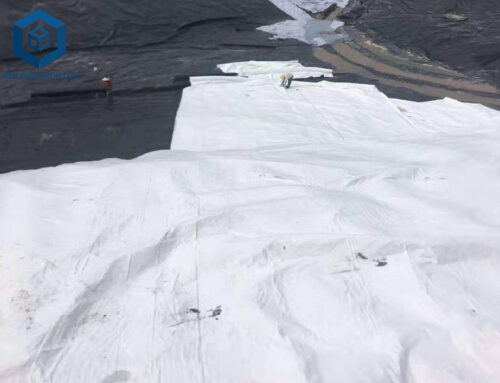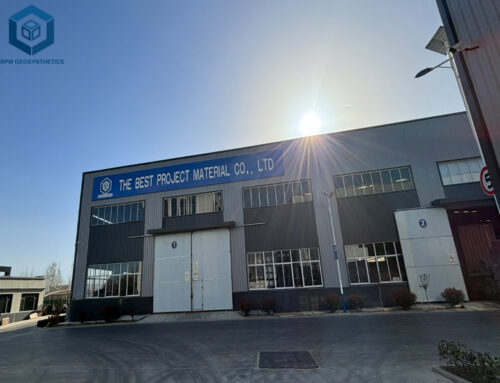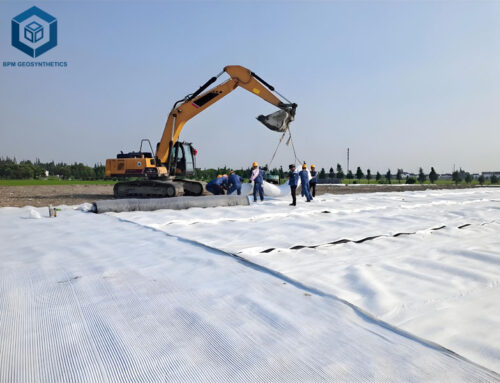Woven geotextile fabric is produced by interlacing synthetic fibers in a woven pattern, creating a strong and durable fabric. It has high tensile strength and is commonly used in applications that require load-bearing capacity and soil stabilization. Nonwoven geotextile fabric, on the other hand, is made by bonding or felting synthetic fibers together without weaving, resulting in a fabric with a random fiber arrangement. It is characterized by high water permeability and filtration properties, making it suitable for applications that require drainage, filtration, and separation functions. While woven geotextile fabric offers strength and stability, nonwoven geotextile fabric provides excellent drainage and filtration capabilities.
1. What Is Woven Geotextile?
Woven geotextile is a type of geosynthetic material that is created by interlacing two sets of yarns, known as the warp and weft, in a regular pattern. The weaving process involves crossing the warp yarns (running lengthwise) with the weft yarns (running widthwise) at right angles, resulting in a stable and grid-like structure.
This results in a strong and durable fabric structure with high tensile strength. Woven geotextiles are commonly used for soil stabilization, separation, filtration, and erosion control in various construction and civil engineering applications. They provide reinforcement to the soil or structures, prevent the mixing of different soil types, and enhance the overall stability of the construction. The open weave pattern allows for water flow while retaining soil particles, making them suitable for applications requiring both drainage and filtration.
2. What Is Nonwoven Geotextile?
Nonwoven geotextiles are typically made from synthetic fibers such as polypropylene, polyester, or polyethylene. These fibers can be in the form of continuous filaments or shorter staple fibers. The manufacturing process involves entangling and interlocking the fibers, creating a three-dimensional structure with varying pore sizes and irregular shapes.
Nonwoven geotextiles are characterized by high water permeability and filtration properties. They are commonly used for applications that require drainage, filtration, separation, and protection. Nonwoven geotextiles allow for efficient water flow, preventing the clogging of drainage systems, while also providing filtration to retain soil particles. They are suitable for various civil engineering projects, including road construction, erosion control, and foundation protection, where high water permeability and filtration capabilities are essential.
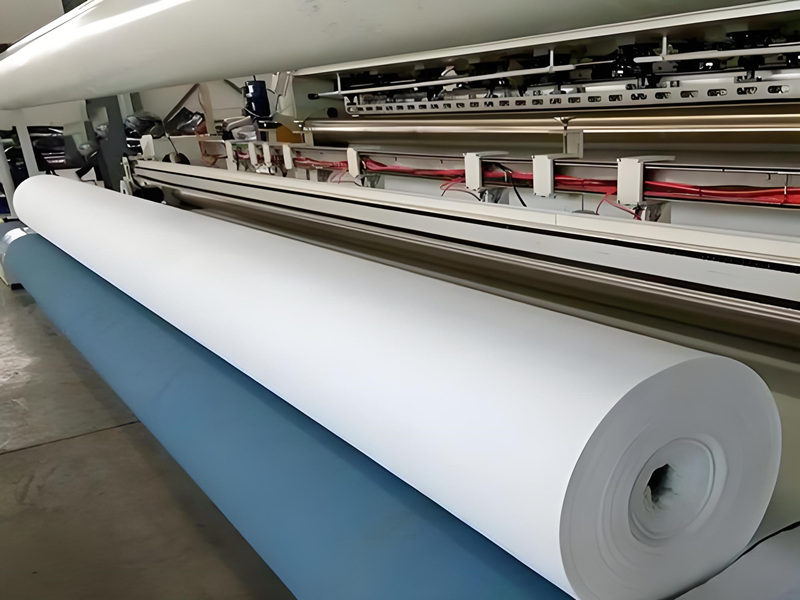

3. What ls The Difference Of Woven vs Nonwoven Geotextile Fabric?
Woven and nonwoven geotextile fabrics are essential materials utilized in a variety of geotechnical and civil engineering applications. While they serve similar purposes, they differ significantly in terms of manufacturing process, structure, and performance characteristics.
3.1 Woven vs Nonwoven Geotextile Fabric – Production Processes
3.11 Woven geotextiles
Woven geotextiles involves interlacing two sets of yarns, known as the warp and weft, at right angles using a weaving loom. This process creates a stable, grid-like structure with uniform openings. The interlocking nature of the woven yarns provides strength and stability to the fabric. The regular pattern of the yarns allows for consistent pore sizes and shapes, contributing to predictable performance characteristics such as filtration and permeability. Woven geotextiles exhibit high tensile strength and stiffness due to the interlaced yarns, making them suitable for applications requiring reinforcement and soil retention.
3.12 Nonwoven geotextiles
Nonwoven geotextiles are manufactured by bonding or felting fibers together without weaving. This can be achieved through mechanical, thermal, or chemical processes. The fibers used in nonwoven geotextiles can be continuous filaments or shorter fibers. During production, these fibers are randomly oriented and entangled, creating a three-dimensional structure. The random arrangement of fibers results in varying pore sizes and irregular shapes within the fabric. Nonwoven geotextiles possess different performance characteristics compared to woven geotextiles. They tend to have lower tensile strength but exhibit excellent elongation and deformability. The random structure of nonwoven geotextiles enables them to provide filtration, drainage, and cushioning properties. They are commonly used in applications where precise filtration, drainage, and protection are required.
3.2 Woven vs Nonwoven Geotextile Fabric – Geotextile Structure
3.21 Woven geotextiles
Woven geotextile excel in applications that require strength and stiffness. Their high tensile strength allows them to endure heavy loads and stresses, making them suitable for soil stabilization, retaining walls, and other reinforcement applications. The regular structure of woven geotextiles aids in soil retention, erosion control, and slope stabilization. The uniform openings between the yarns facilitate effective filtration, allowing water to pass through while retaining soil particles.
3.22 Nonwoven geotextiles
Nonwoven geotextiles,with their random fiber arrangement, offer unique advantages. They exhibit excellent elongation and deformability, making them suitable for applications where flexibility and conformability are required. Nonwoven geotextiles provide filtration capabilities, although their random structure may result in less precise filtration compared to woven geotextiles. They are commonly used in drainage systems, filtration behind retaining walls, and subsurface drainage applications. The random structure and varying pore sizes of nonwoven geotextiles allow for effective drainage and permeability.
3.3 Woven vs Nonwoven Geotextile Fabric – Filtration
3.31 Woven geotextiles
Woven geotextile is known for their effective filtration due to the regular and consistent openings created by the interlacing of yarns. These openings serve to retain soil particles while allowing water to pass through. The uniform pore sizes and shapes in woven geotextiles contribute to precise filtration performance. This makes them particularly suitable for applications where accurate particle retention is crucial, such as in erosion control, shoreline protection, and subsurface drainage systems. The stable and grid-like structure of woven geotextiles ensures reliable filtration efficiency.
3.32 Nonwoven geotextiles
Nonwoven geotextile also provide filtration, but their random fiber arrangement may result in slightly less precise filtration performance compared to woven geotextiles. The random structure of nonwoven geotextiles leads to varying pore sizes and irregular shapes within the fabric. While they still retain soil particles to a certain extent, the filtration may be less uniform. Nonwoven geotextiles are commonly used in applications where high-precision filtration is not the primary concern, such as in aggregate drains, separation layers, and cushioning applications. Their filtration capabilities, combined with other properties like drainage and cushioning, make them versatile in various engineering projects.
3.4 Woven vs Nonwoven Geotextile Fabric – Geotextile Permeability
3.41 Woven geotextiles
Woven geotextile, with their regular and uniform pore structure, generally have higher permeability compared to nonwoven geotextiles. The interlacing of yarns in woven geotextiles creates consistent openings that allow water to flow through easily. This uniform pore structure facilitates efficient water drainage and promotes effective filtration. Woven geotextiles are commonly used in applications where high permeability is essential, such as in drainage systems, road construction, and erosion control. Their reliable permeability ensures efficient water flow, preventing the accumulation of excess water and associated problems.
3.42 Nonwoven geotextiles
Nonwoven geotextile also possess permeable properties, but their permeability is typically lower compared to woven geotextiles. The random arrangement of fibers in nonwoven geotextiles results in varying pore sizes and irregular shapes, which can reduce the overall permeability. While nonwoven geotextiles still allow water to pass through, their permeability may be slightly compromised. However, it’s important to note that nonwoven geotextiles excel in other areas such as filtration, separation, and cushioning.
3.5 Woven vs Nonwoven Geotextile Fabric – Applications
3.51 Woven geotextiles
Woven geotextile find widespread application in various areas. They are commonly used for soil stabilization, reinforcing the soil to enhance its strength and load-bearing capacity. They are employed in road construction, embankments, and slopes to prevent soil erosion and enhance stability. Woven geotextile is also utilized in filtration applications where precise particle retention is crucial. They find use in erosion control, shoreline protection, and subsurface drainage systems, allowing water to pass through while preventing soil particles from migrating.
3.52 Nonwoven geotextiles
Nonwoven geotextile serve various purposes as well. They possess good filtration capabilities, making them suitable for applications where high-precision filtration is not the primary concern. Nonwoven geotextile is commonly used in aggregate drains, subsurface drainage systems, and behind retaining walls, allowing water to pass through while preventing soil particle migration
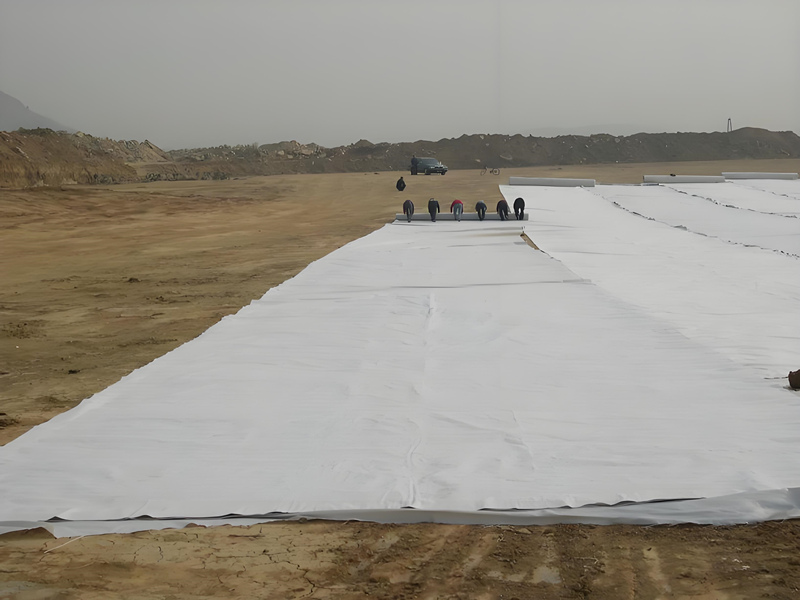
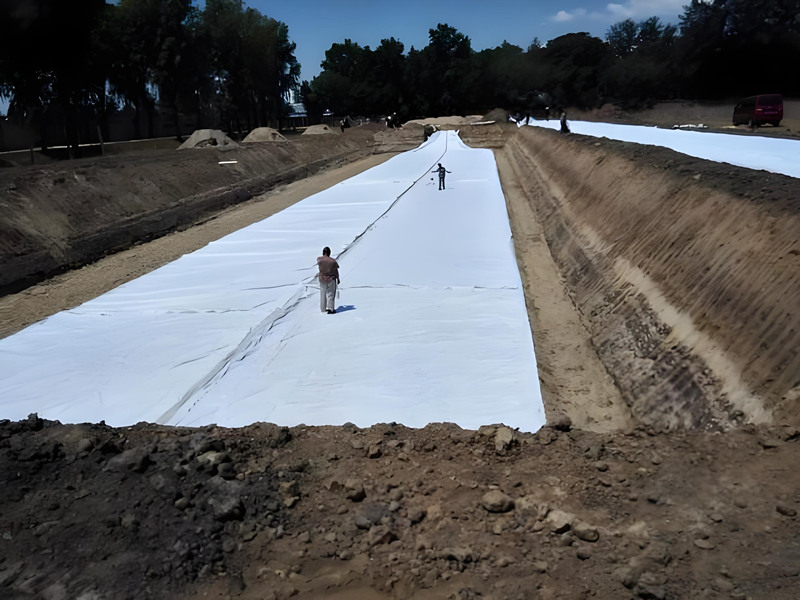
4. Summary
Woven geotextile is characterized by its regular structure, higher strength, and permeability, suitable for filtration, separation, and reinforcement. Nonwoven geotextile has a random structure, lower strength, and is more deformable, making it suitable for filtration, drainage, and cushioning. The choice depends on engineering requirements and site conditions. Woven geotextile excels in precise filtration and high permeability, while nonwoven geotextile is preferred for filtration, drainage, and cushioning. Understanding their distinct characteristics helps select the appropriate geotextile for specific project needs.
If you’re looking for high-quality geotextiles you can trust, BPM Geotextile is the right choice for you.

